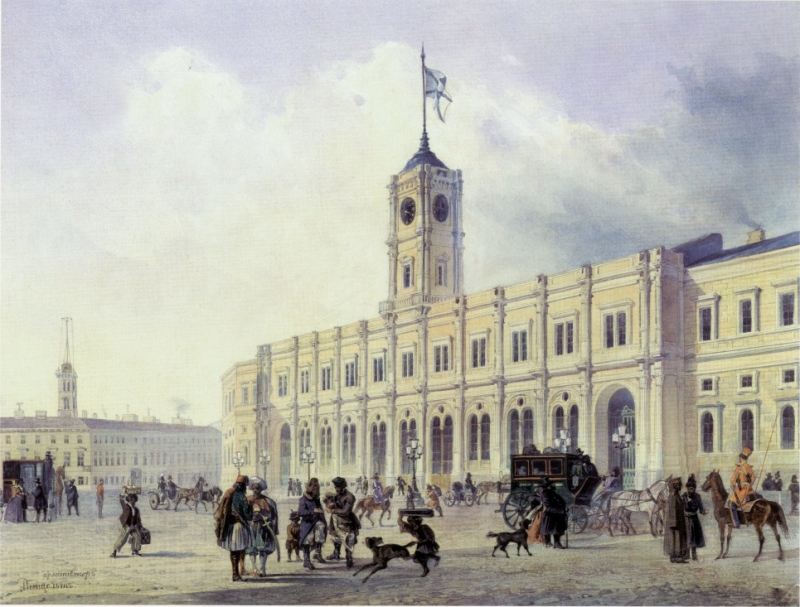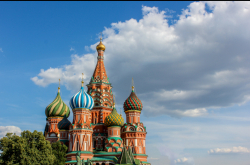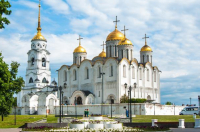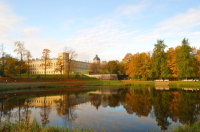Moscow Station (Moskovsky Vokzal)
Opened in 1847, Moscow Station serves as one end of the historic and vital railway connection between St. Petersburg and Moscow. Upon the end of your journey from here to the Russian capital, you’ll find yourself at Leningrad Station, named after St. Petersburg’s Soviet-era name. The visual similarities between the two terminals are far from coincidental: both were designed by the same architect and inspired by Italian town halls of the Renaissance era.
From here, you can travel to such suburban destinations in the southeast as Tosno or Kolpino, or to major cities including Moscow and Veliky Novgorod.
Fun facts:
- This is the only terminal in the city that is serviced by the Sapsan high-speed train;
- Was originally christened Nicholas Railway Station after Emperor Nicholas I, whose reign saw the opening of Russia’s first-ever railway lines.
Finland Station at night. Credit: Matvey Yelkin (@matthewelk) via Unsplash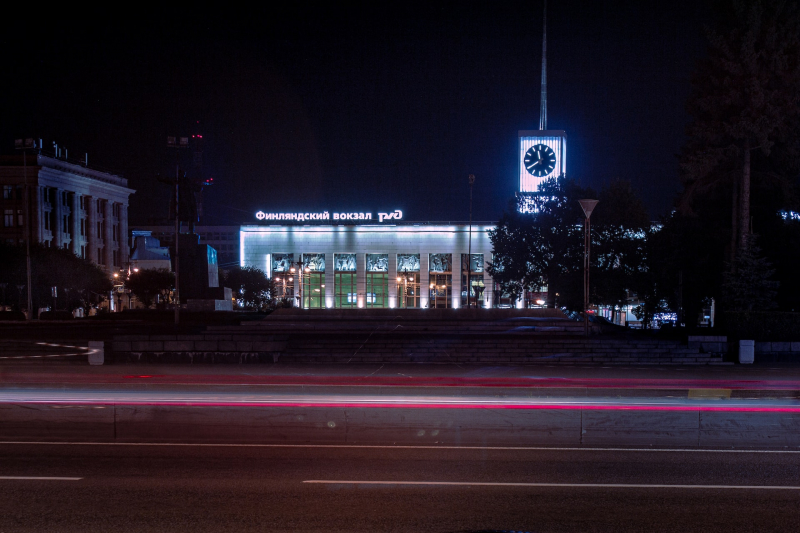
Finland Station (Finlyandsky Vokzal)
Opened in 1870, the Finland Station is of particular historic significance to St. Petersburg: after all, it was here that in April 1917 the revolutionary leader Vladimir Lenin arrived incognito from Finland (and then did it again in August of the same year). Today, the locomotive he traveled on is prominently displayed behind a glass case on one of the platforms.
Travelers departing from Finland Station can head north towards coastal resort towns (Sestoretsk, Komarovo, Repino), the historic Vyborg, or further yet into Karelia or even Finland.
Fun facts:
- During the Siege of Leningrad, this was the only operational station in the city as part of the Road of Life;
- Gets a shout-out in the Pet Shop Boys’ 1984 hit West End Girls.
Baltic Station in 1909. Credit: Wikimedia Commons (public domain image)
Baltic Station (Baltiyskiy Vokzal)
Originally named Peterhof Station upon its construction in 1857, the Baltic Station gained its current name in 1872 after the opening of the first railway line to the Estonian capital of Tallinn (then called Reval).
Head here if you’re hoping to catch a southwest-bound train towards the resplendent royal residences in Peterhof, Lomonosov, or Krasnoe Selo – or even further to the cities of Ivangorod, Pskov, or Tallinn.
Fun facts:
- In the days of Imperial Russia, the station’s left wing was designed to be used exclusively by the royal family;
- Is located next door to the massive (and very much worth visiting) Russian Railway Museum.
Vitebsk Station. Credit: Victor Malyushev (@malyushev) via Unsplash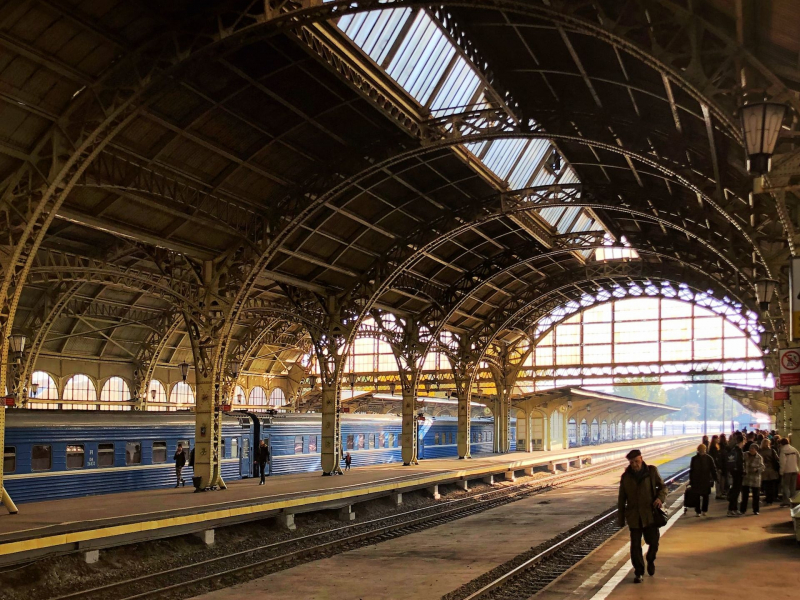
Vitebsk Station (Vitebsky Vokzal)
When it was ceremoniously inaugurated as Tsarskoselsky Station in 1837, this was more than just a station; it wasn’t even the first station in just St. Petersburg; it was the first-ever railway station in all of Russia! It was from here that Emperor Nicholas I and his family took the country’s first train towards their summer residence in Tsarskoe Selo (now Pushkin).
The station services lines towards the nearby towns of Pushkin and Pavlovsk, as well as the Belarussian capital of Minsk and the Russian exclave of Kaliningrad.
Fun facts:
- Renamed to Vitebsk Station in 1935, denoting its history as one end of the rail line between St. Petersburg and Vitebsk (Belarus);
- With its well-preserved Art Nouveau interiors, Vitebsk Station has for decades remained a popular shooting location among both wedding photographers and film directors, even once playing the part of London’s Victoria station in the acclaimed Soviet adaptation of Sherlock Holmes.
Ladoga Station. Credit: Alex 'Florstein' Fedorov via Wikimedia Commons / CC BY 4.0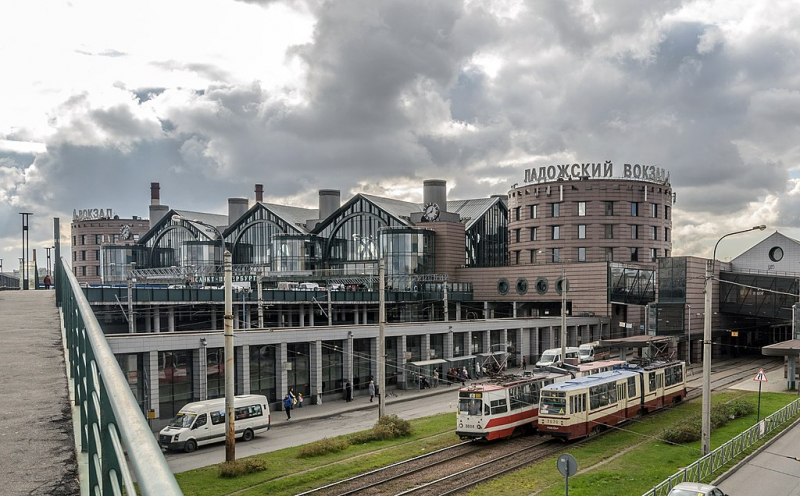
Ladoga Station (Ladozhsky Vokzal)
Opened in 2003 to relieve some of the traffic from other major railway hubs in the city, Ladoga Station cannot yet boast a rich history, but it is a convenient take-off point for trips to nearby destinations (such as the monastery town of Tikhvin) and major cities (Murmansk, Moscow, Ekaterinburg, and so on).
Fun facts:
- At less than 20 years old, it is by far the youngest major station in St. Petersburg – and, in fact, the only one that’s not actually a terminus, but a through station;
- Designed by Studio 44 – the same architectural bureau that authored the award-winning concept design of ITMO University’s upcoming ITMO Highpark campus.
For more tidbits and tips on exploring Russia by rail (and not only), check out our quick guide to Moscow, a rundown of suburban trains, and the best budget getaways. Use the Travel tag to explore all of our original articles on the subject.
